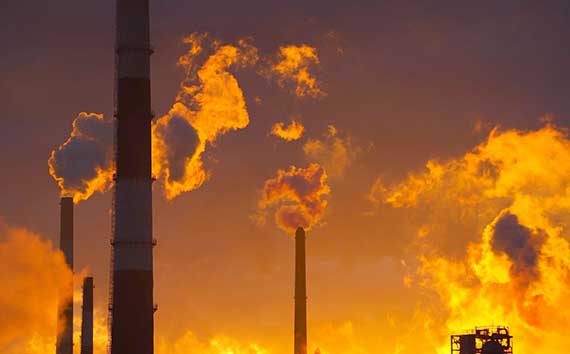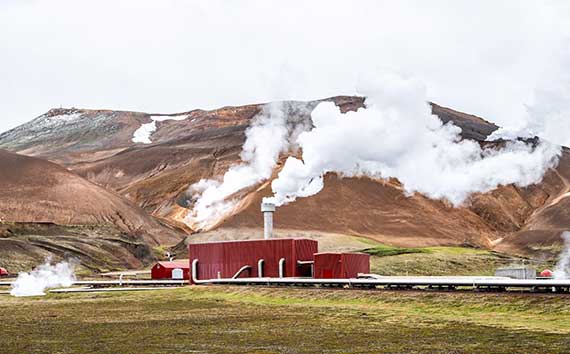World energy consumption is projected to increase almost 50% from 2020 levels by 2050. As global energy demand increases, it is essential for us to understand energy data so we can take action to minimize the negative effects of energy production on our planet.
With the majority of global energy production reliant on non-renewable energy sources, like burning fossil fuels, climate change poses a serious threat to environmental stability. The burning of fossil fuels accounts for 83% of global energy creation and releases carbon dioxide, which increases the atmosphere’s greenhouse effect, causing global warming and climate change.
Today, we will explore relevant information surrounding world energy consumption. We’ll look into trends and data sets of energy use worldwide, what sources energy comes from, and what solutions are available to combat excessive energy use and dirty energy production.
What Is the Total World Energy Consumption?
The total world energy consumption is projected to reach 580 million terajoules in 2022. That is a significant increase from 1980 when the world used around 300 million terajoules of energy. What is more, world energy consumption is expected to increase in the coming years.
While the global energy demand fell by about 1% in 2020 due to the COVID-19 pandemic, it is expected to have grown around 5% in 2021, and it could increase by 4% in 2022.
By 2050, global energy use could increase to around 900 million terajoules. Growing demands for energy are all the more reason to begin focusing on clean and renewable energy solutions moving forward.
What Are the Main Sources of World Energy Consumption?
Globally, the primary source of energy generation comes from fossil fuel combustion; burning oil, coal, and gas. The majority of global energy still depends on these fossil fuels, which make up about 83% of total energy consumption annually.
With such a large proportion of energy created through the use of fossil fuels, excessive amounts of carbon dioxide and other greenhouse gas emissions can place a strain on Earth’s natural carbon cycle. Out of the fuel types used for energy and industrial production, oil, coal, and gas alone were responsible for about 93% of those carbon emissions in 2020.
Other sources in the energy mix come from renewable and clean energy sources. A shift toward using sustainable energy can help minimize the effects of excessive carbon dioxide emissions on the globe.
Hydropower leads in the renewable energy category, generating about 6.4% of all energy consumed in 2019. In the same year, other renewable energy sources include wind, which produced just over 2% of global energy, and solar, which accounted for just over 1%. Biofuels were responsible for about 0.7%.
What Happens When World Energy Consumption Increases?
Increasing energy demands around the world pose a threat to the climate if we continue to rely on fossil fuels for the majority of our energy needs. Currently, too much of the global energy created uses sources that emit carbon dioxide and other greenhouse gases. As long as this practice continues, the warming effect caused by increased greenhouse gases in our atmosphere will harm ecosystems, animals, and human life on Earth.
Unfortunately, global energy demand is outpacing the growth of renewable energy generation. The best bet for protecting the climate is to continue focusing on clean and renewable sources so we can provide a green solution to the increasing energy demands around the world.
As soon as 2026, global renewable electricity capacity is expected to increase by 60% from its 2020 levels. These clean energy options could account for as much as 95% of all new global energy sources in 2026. Much of this energy will come in the form of solar power.
As long as we continue to look for sustainable options to the increasing world energy demands, we can be sure we are moving in the right direction.
Which Countries Have the Highest Energy Consumption?
From the highest energy use to the least, these are the top five energy-consuming countries: China, the United States, India, Russia, and Japan.
China consumes the most energy annually, using 6.3 trillion kilowatt-hours (kWh) every year. The nation accounts for around 24% of global energy consumption annually. In 2019, 57.7% of China’s energy was produced using coal. In 2018, China produced 18% of its energy using hydropower, an amount accounting for around 28% of global hydropower capacity.
The United States comes next, using 3.9 trillion kilowatt-hours each year. In 2020, 35% of consumed energy came from petroleum use. In the same year, 34% was consumed using natural gas, 12% using renewable energy, 10% from burning coal, and 9% from nuclear power plants.
After the United States comes India, using 1.54 trillion kWh annually. In 2018, India used coal to generate 45% of its energy. Petroleum accounts for 26% of India’s energy production, and burning traditional biomass and waste accounts for another 20%. The nation intends to increase its natural gas consumption from 6% to 15% by 2030.
Russia ranks fourth among the highest energy-consuming nations. It consumes 1.06 trillion kilowatt-hours per year. In 2020, most of the nation’s energy consumption came from natural gas, accounting for 52% of their total. Petroleum accounted for 23%, while coal made up 12%. Both renewable energy and nuclear power came in at 7%.
Last is Japan, consuming 0.93 trillion kWh every year; 40% of Japan’s energy consumption came from petroleum in 2019. The rest of their total energy consumption breaks down as follows: coal (26%), natural gas (21%), other renewables (6%), hydro (4%), and nuclear (3%).
Which Countries Lead in Low-Carbon Energy Consumption?
In 2019, Iceland led the way in producing the majority of its energy from renewable sources. The nation received 79% of its energy from sources responsible for minimal carbon emissions. Its primary energy consumption came from hydropower and geothermal, making up 55% and 24% of its total energy consumption, respectively.
Other nations that produced a large amount of their energy using renewable and clean sources like nuclear power were Sweden (69%), Norway (66%), France (49%), and Switzerland (49%).
Is 100% Clean Energy Possible?
A global transition to 100% clean energy is feasible. Research from Stanford indicates that by 2030, countries can meet 80% of their electricity needs using wind, solar, and hydroelectricity. It also shows countries can use these renewable energy sources for 100% of their electricity needs by 2050.
Improved energy efficiency and increased electricity use in energy-dependent sectors would be required for a world that runs on 100% renewable energy. This kind of energy system transition would come at a price, costing many nations an initial payout of $73 trillion. According to the study, these expenses would pay for themselves in under seven years.
How Can We Reduce World Energy Consumption?
The best way to reduce world energy consumption is to take personal responsibility and start to become conscious about how much energy you use. Another great option is to spread awareness about what areas in our day-to-day lives consume energy and inspire others to take action.
It is easy to forget how much energy an individual can use daily, from driving to turning the lights on at home to the cost of heating water for your shower. In fact, the average person consumes 12.1 kilowatt-hours per day in the United States.
You can reduce the amount of energy you consume by staying aware of what electricity you are using in your home. In the United States, the residential sector was responsible for 22.4% of the energy consumed in 2020.
Remember to turn off lights and unplug electronics that are not in use. Switch to energy-efficient light bulbs and switch to electric-powered water heaters, space heaters, and air conditioning. Consider solar panels as an option to power your home. These options can help to reduce unnecessary electricity generation.
Transportation is another sector that uses a good deal of energy, accounting for 26.1% of the energy used in the U.S. in 2020. If you are in the market for a new vehicle, consider switching to an electric car or hybrid. Otherwise, try to minimize the amount of time you spend driving if you are in a position to walk or ride a bike instead.
Other ways you can limit the amount of energy you consume is by reducing the amount of time using electronics like your phone, watching TV, and playing video games.
Minimizing your electricity consumption positively impacts the environment and decreases your carbon footprint. Another way you can make a difference for the good of the environment is to explore renewable energy certificates that, when purchased, offset your electricity use by supporting clean energy projects like wind and solar farms.
Moving Forward With New Knowledge on World Energy Consumption
Studying energy statistics on world energy consumption trends can equip us with the information necessary to counter the burning of fossil fuels for power generation. While the demand for energy continues to increase around the globe, many nations are taking action to rely on reusable energy sources to meet their needs.
There is a possibility that our world can run on a 100% reusable energy supply in the future. Until then, it is in the best interest of humanity and our planet as a whole for each of us to take actions to help minimize our impact of energy usage in our daily lives.
Terrapass provides you the opportunity to make a difference today through the use of carbon offsets. View our carbon offset options to see how you can actively contribute to making the Earth a greener place.
Brought to you by terrapass.com
Featured image:











